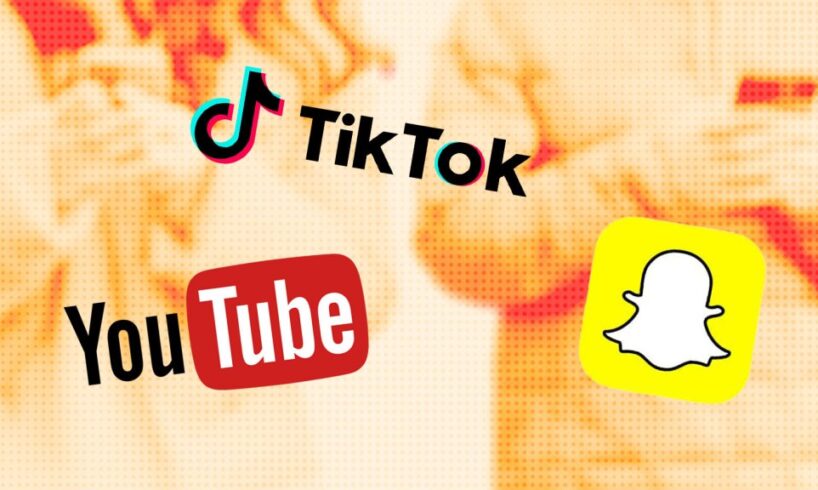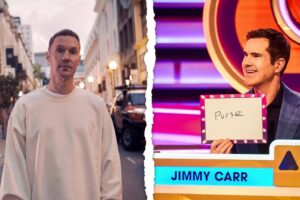
Big tech companies publicly named as being included in the teen social media ban are taking steps to get around the law.
But while the companies behind platforms like YouTube, Snapchat and TikTok are all claiming they should be exempt or are considering releasing exempt versions of their apps, the Albanese government is considering using a power that would definitively rule them in — potentially avoiding a legal battle over their inclusion.
On Sunday night, the Albanese government announced that Communications Minister Anika Wells and eSafety commissioner Julie Inman Grant would meet with Meta, Snapchat, YouTube and TikTok this week ahead of its “social media minimum age” policy, which requires platforms to take reasonable steps to keep children under the age of 16 from having accounts on their platforms.
Related Article Block Placeholder
Article ID: 1224598
“Our world-leading social media minimum age laws will give children a reprieve from the persuasive pull of platforms, and those platforms must work closely with eSafety to ensure their systems comply with the law,” Wells said in the release.
By Monday afternoon, a parliamentary committee considering the ban had heard that three of those companies were making plays to get out of it.
Independent. Irreverent. In your inbox
Get the headlines they don’t want you to read. Sign up to Crikey’s free newsletters for fearless reporting, sharp analysis, and a touch of chaos
By continuing, you agree to our Terms & Conditions and Privacy Policy.
YouTube’s public policy and government affairs senior manager Rachel Lord told a hearing of the Senate’s environment and communications references committee’s internet search engine services online safety code inquiry that the Google-owned video platform did not believe that it was “in scope” of the teen social media ban. She declined to rule out a potential legal challenge.
In an afternoon session of the hearing, Inman Grant said that Snapchat representatives had told her that the company, Snap, did not believe it qualified either. (A Snap spokesperson told Crikey that “the primary use case for Snapchat is, and always has been, messaging with close friends and family.)
The eSafety commissioner also appeared to suggest that TikTok representatives had raised creating a “stripped down” version of the platform that wouldn’t qualify for the ban in their meeting.
While emphasising that TikTok hadn’t sought an exemption in a “fulsome manner” and that she “wasn’t given any details”, Inman Grant said that TikTok staff had asked about creating an app that would show video content to users under 16 that would still ensure they weren’t included in the ban.
Crikey understands that TikTok representatives have accepted the view that its main short video platform will come under the ban.
“I can say that every company has raised the prospect of some kind of a workaround,” Inman Grant added.
Related Article Block Placeholder
Article ID: 1224474
The basis of these claims is the definition of an “age-restricted social media platform” in the Online Safety Amendment (Social Media Minimum Age) Act 2024.
The law’s primary definition for platforms in the ban is a service that has at least a “significant purpose of enabling social interaction” between two or more users, allows users to connect to each other and allows users to post content.
The government has also created exemptions from the ban for some categories of social media platforms, including messaging and gaming services, via legislative rules issued by Wells in July.
It’s these definitions that YouTube, Snapchat and TikTok are hoping to use: YouTube claims that it doesn’t fit the definition. Snap is claiming it is exempt because it is a messaging application. TikTok, Inman Grant suggested, is considering releasing an alternative video platform that wouldn’t fit the definition for a social media platform (like YouTube Kids).
However, the law also gives power to the communications minister to rule any platform as being included in the ban, regardless of whether it fits the other definition.
Any electronic service “specified in the legislative rules” written by the communications minister is also deemed an “age-restricted social media platform” — just so long as the minister believes it is “reasonably necessary to do so in order to minimise harm to age-restricted users”. (Research released by the eSafety commissioner in July suggests that YouTube, TikTok, Facebook, Instagram and Snapchat were the platforms that children under 16 were most recently exposed to harmful content, in that order.)
Related Article Block Placeholder
Article ID: 1223236
This power hasn’t been used so far, and the eSafety commissioner’s office has gone through the process of asking 16 companies to self-assess whether they believe they’re included in the law or not. Inman Grant told the committee that the major platforms have until this Thursday to inform her office whether they agree with its initial assessment that their platforms need to comply with the ban.
Should these companies continue to challenge their inclusion, Crikey understands that the minister’s office is working towards explicitly listing some companies as being in the ban — seemingly ending the debate over whether YouTube, Snapchat and TikTok would be included. The government is expected to unveil on Friday what Inman Grant described as a “dynamic list” of platforms.
Last night, Wells announced that the government is kicking off a national advertising campaign to educate parents and children about the imminent ban.
Inman Grant also foreshadowed that the eSafety office will release content developed by young Australians that gives advice on how to prepare for the ban, which begins on December 10.





